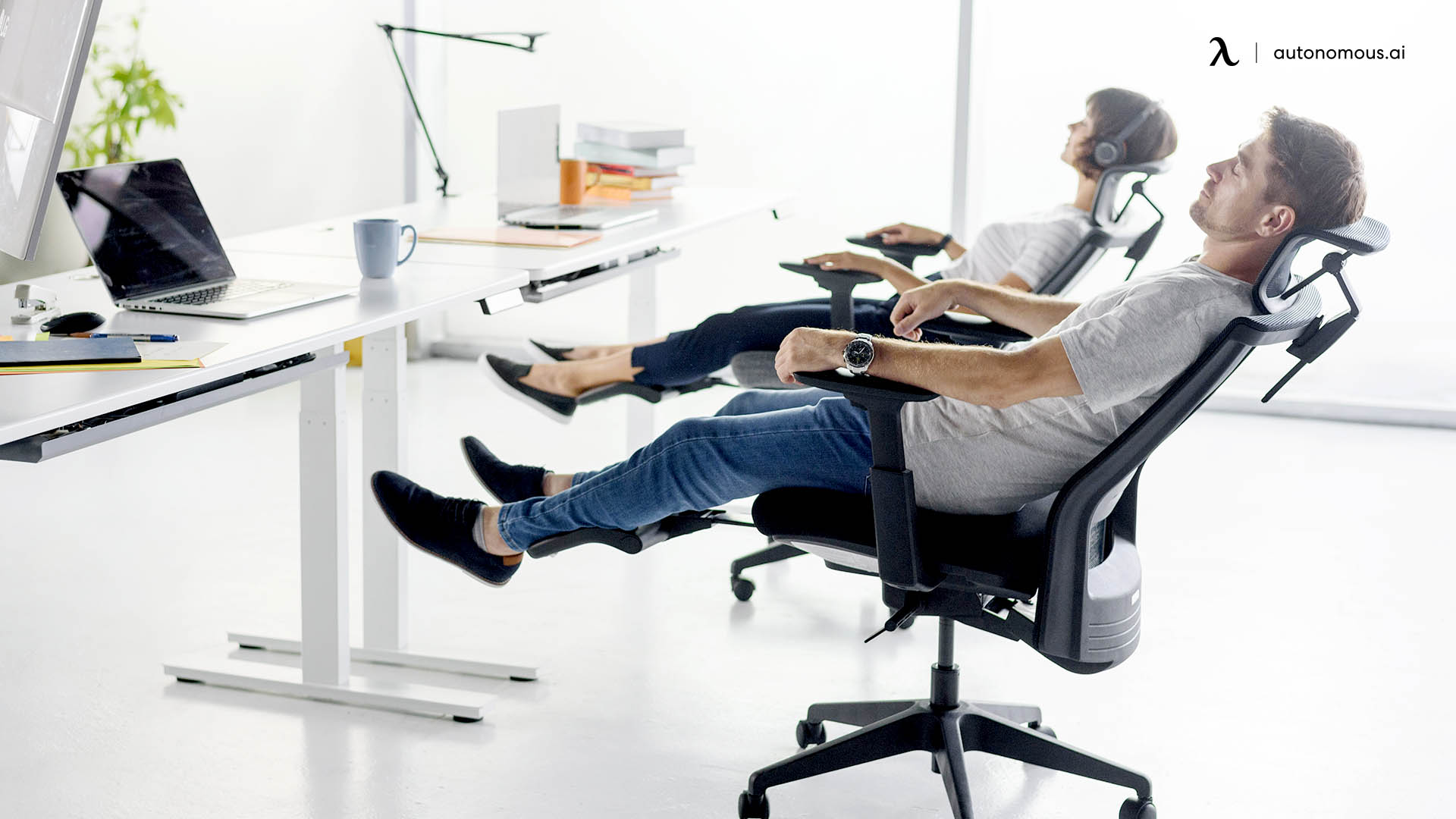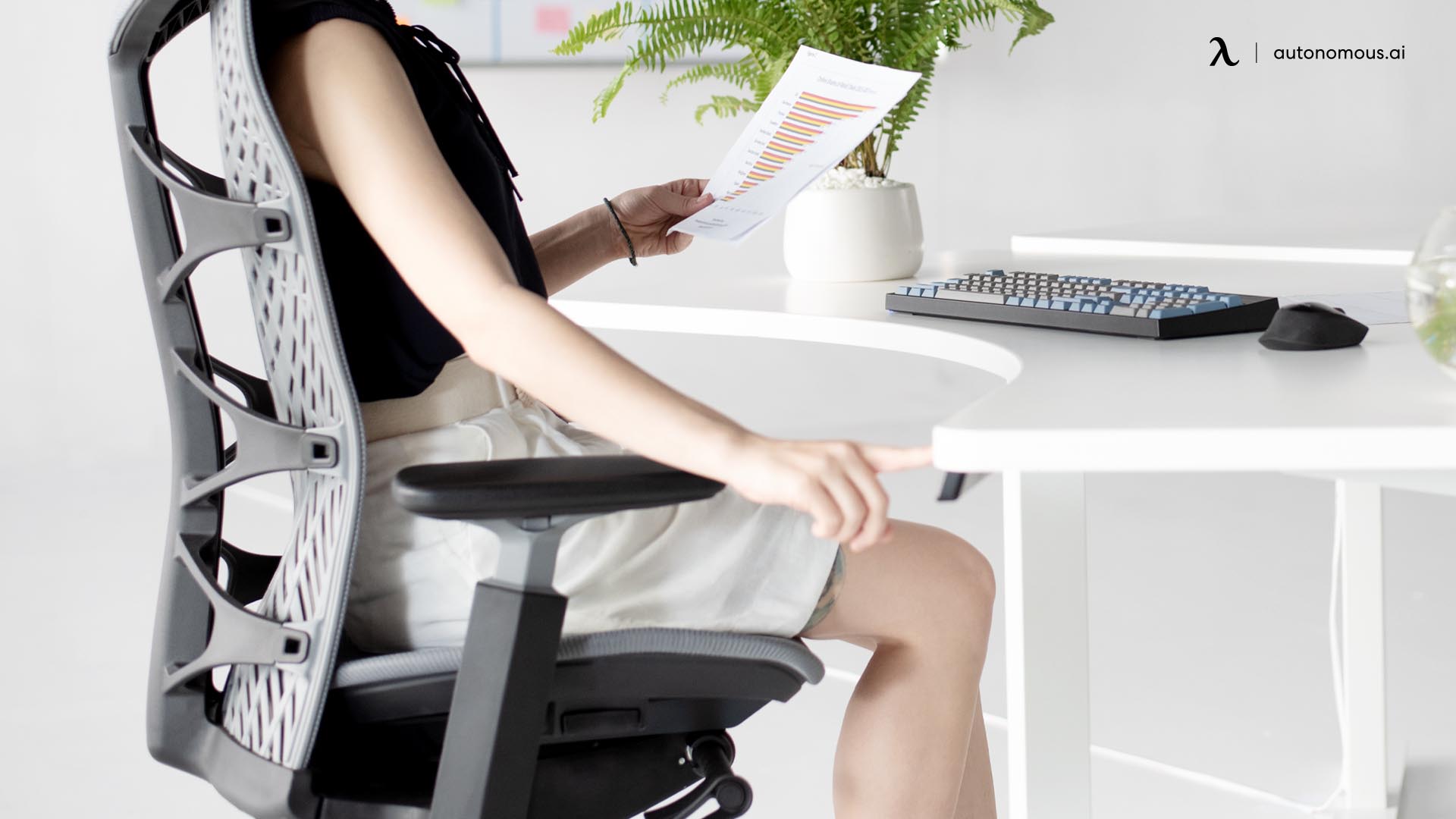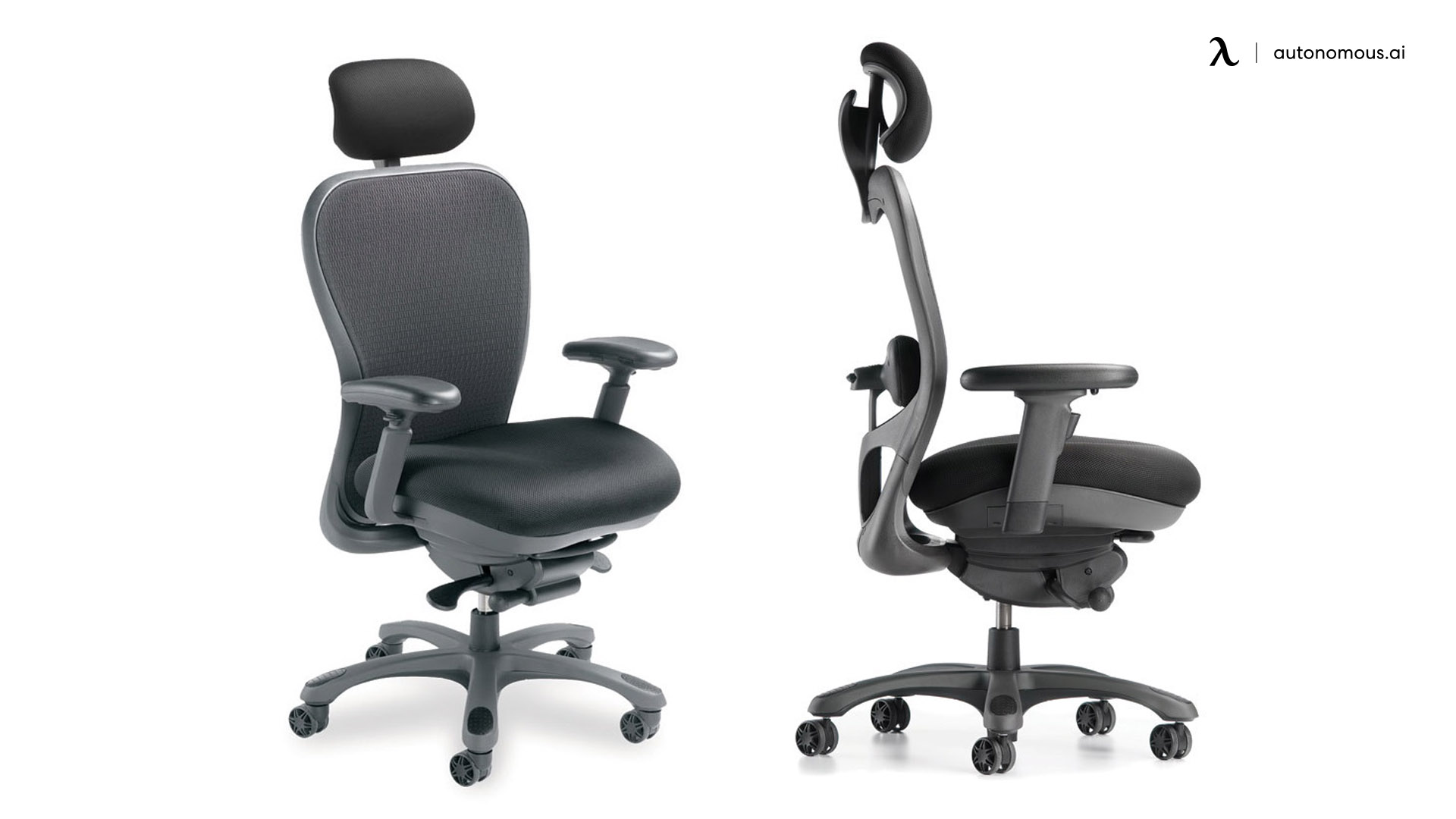Top Ergonomic Features for Back Support

Selecting an office chair with optimal ergonomic features is crucial for alleviating back pain and promoting good posture. Many factors contribute to a chair’s effectiveness in supporting the back, and understanding these features is key to making an informed purchase. This section details the essential ergonomic elements to consider when choosing an office chair designed to improve back health.
Lumbar Support Mechanisms
Adequate lumbar support is paramount for maintaining the natural curvature of the spine. Poor lumbar support can lead to slouching, muscle strain, and increased back pain. Several mechanisms provide lumbar support, each with its own advantages and disadvantages.
| Lumbar Support Type | Advantages | Disadvantages | Example |
|---|---|---|---|
| Built-in Lumbar Support | Often sufficient for individuals with average lumbar curves; generally less expensive. | Lack of adjustability; may not suit all body types. | Many basic office chairs feature a pre-formed lumbar curve in the backrest. |
| Adjustable Lumbar Support | Allows for personalized adjustment to match individual spinal curves; better accommodates various body types. | More expensive than built-in; may require adjustments to find optimal positioning. | Many ergonomic chairs feature a knob or lever to adjust the height and depth of the lumbar support. |
| Inflatable Lumbar Support | Offers a customizable level of firmness; can be easily adjusted throughout the day. | May not provide consistent support over time; can be prone to leaks or deflation. | Some chairs offer inflatable lumbar cushions that can be added to chairs lacking built-in support. |
Adjustable Height and Armrests
The ability to adjust the chair’s height to match the user’s desk height is critical. Proper height adjustment ensures that the feet are flat on the floor and the thighs are parallel to the ground, reducing strain on the lower back. Armrests provide additional support, reducing shoulder and neck tension. Ideally, armrests should be adjustable in height and width to accommodate different body sizes and postures. Adjustable armrests allow for optimal positioning of the elbows and forearms, reducing pressure on the shoulders and neck.
Headrests
Headrests provide crucial support for the neck and head, particularly for individuals who spend extended periods sitting. A well-positioned headrest promotes proper posture and reduces strain on the cervical spine. Adjustable headrests allow users to customize the height and angle to best suit their needs.
Comparison of Office Chair Brands in Australia
The following table compares four popular office chair brands available in Australia, highlighting their ergonomic features and price range. Note that prices are approximate and can vary depending on the specific model and retailer.
| Brand | Key Ergonomic Features | Price Range (AUD) | Availability |
|---|---|---|---|
| Herman Miller | Highly adjustable lumbar support, adjustable armrests, headrest (on select models), breathable mesh back | $1000 – $3000+ | Available through authorized retailers |
| Steelcase | Adjustable lumbar support, adjustable armrests, headrest (on select models), variety of fabric and mesh options | $800 – $2500+ | Available through authorized retailers |
| Humanscale | Self-adjusting lumbar support, responsive seating, minimal adjustments needed, often features a headrest | $1200 – $3500+ | Available through authorized retailers |
| Ergohuman | Adjustable lumbar support, adjustable armrests, headrest, multiple colour options | $500 – $1500 | Widely available online and in office furniture stores |
Materials and Construction

The materials and construction of an office chair significantly impact its ability to provide adequate back support and contribute to overall comfort and user well-being. The choice of materials affects breathability, durability, and ease of cleaning, while the chair’s construction, including the base and mechanism, directly influences spinal alignment and posture. Understanding these factors is crucial for selecting a chair that effectively addresses back health concerns.
Best office chair for bad back australia – Different materials offer varying degrees of support, comfort, and practicality. Mesh, leather, and fabric are common upholstery choices, each with its advantages and disadvantages.
Material Properties and Their Influence on Back Support
Mesh fabrics, often made from nylon or polyester, offer excellent breathability, preventing overheating and discomfort during prolonged sitting. Their flexibility conforms to the body’s shape, providing a degree of ergonomic support. However, mesh can lack the cushioning of other materials, potentially feeling less comfortable for some users. Durability varies depending on the quality of the mesh and its construction. Cleaning is generally straightforward, often involving wiping with a damp cloth.
Leather, while luxurious and durable, can be less breathable than mesh or fabric. It offers good support and can be easily cleaned, but its cost is generally higher. Genuine leather is more breathable and durable than synthetic leather, which may crack or peel over time. The weight and stiffness of leather can also be a factor for individuals with certain back conditions.
Fabric upholstery offers a balance between breathability and comfort. Various fabric types exist, ranging from breathable cotton blends to more durable polyester options. Fabric chairs can provide good cushioning and support, but they can be more difficult to clean than mesh or leather and may be prone to staining or wear. The choice of fabric will significantly influence the chair’s overall comfort and longevity.
Chair Base and Mechanism: Impact on Spinal Alignment
The chair base and its mechanism are integral to providing proper spinal support. A five-star base, typically made of durable materials like aluminum or high-quality plastic, offers stability and even weight distribution. The swivel function allows for easy movement and prevents strain from twisting the torso.
The tilt mechanism allows the user to recline the backrest, adjusting the angle of the seat and back to find a comfortable and supportive position. This is particularly important for maintaining proper spinal curvature and reducing pressure on the lower back. A good tilt mechanism should allow for smooth and controlled adjustment, offering a range of positions to suit individual needs. The locking mechanism should be sturdy and reliable, preventing accidental shifting during use. Pneumatic height adjustment is another crucial feature, allowing users to adjust the chair’s height to match their desk and ensure proper leg and back alignment. A poorly designed or malfunctioning mechanism can negate the benefits of other ergonomic features and even contribute to back problems.
Construction of a High-Quality Office Chair for Back Problems
A high-quality office chair designed for individuals with back problems incorporates several key design elements. The frame should be constructed from robust materials, such as steel or high-grade aluminum, ensuring durability and stability. The backrest should be ergonomically shaped to support the natural curvature of the spine, ideally with adjustable lumbar support to cater to individual needs. High-density foam padding provides comfortable cushioning without losing its shape over time. The upholstery should be breathable and durable, with mesh or a high-quality, breathable fabric being preferable to leather for many users.
Assembly should be straightforward, using high-quality fasteners and clear instructions. Quality control measures throughout the manufacturing process are crucial, ensuring the chair meets specified ergonomic standards and safety requirements. This includes rigorous testing of materials and mechanisms to guarantee durability and reliability. The chair’s overall design should promote proper posture and minimize strain on the back, incorporating features such as adjustable armrests, a headrest (where appropriate), and a stable base with smooth-rolling casters.
User Reviews and Expert Recommendations: Best Office Chair For Bad Back Australia

Choosing the right office chair for back pain requires careful consideration of user experiences and expert advice. Understanding what works for others, combined with professional guidance, significantly increases your chances of finding the perfect chair to alleviate discomfort and promote good posture. This section delves into both user reviews and expert recommendations to guide your decision-making process.
User Reviews of Popular Office Chairs in Australia
Many online retailers feature extensive customer reviews. Analyzing these provides valuable insights into the real-world performance of various chair models. Below are excerpts focusing on users’ experiences with back pain, categorized by chair model. Note that individual experiences can vary.
Herman Miller Aeron
Several users with chronic back pain reported significant improvement in comfort and pain reduction after switching to the Herman Miller Aeron. One review stated, “After years of debilitating back pain, the Aeron has been a game changer. The adjustable lumbar support and breathable mesh back are fantastic.” Another user commented on the chair’s ability to “keep my back supported throughout the day, preventing that mid-afternoon slump and associated pain.” However, some users noted the high price point as a drawback.
Steelcase Leap
The Steelcase Leap also received positive feedback from users experiencing back problems. One reviewer highlighted the chair’s “excellent lumbar support and adjustable armrests,” stating that it “alleviated the pressure on my lower back.” Another mentioned the chair’s “intuitive adjustments” and how easily they could be personalized for optimal comfort. A recurring theme was the chair’s durability and long-term effectiveness in supporting the back.
Humanscale Freedom, Best office chair for bad back australia
Users praised the Humanscale Freedom for its self-adjusting features and responsive design. Comments included, “The chair automatically adjusts to my movements, which is fantastic for someone with a bad back,” and “I no longer feel stiff or sore after long hours of sitting.” However, some found the initial learning curve for the self-adjusting mechanism slightly challenging.
Expert Recommendations on Choosing an Office Chair for Back Pain Relief
Physiotherapists and ergonomists consistently emphasize several key factors when recommending office chairs for back pain sufferers. Proper posture and support are paramount. They advise choosing a chair that promotes a neutral spine alignment, allowing the natural curves of the back to be maintained.
Chair Selection Criteria and Adjustments
Experts recommend prioritizing chairs with adjustable lumbar support, allowing for customized support in the lower back. Adjustable seat height and armrests are also crucial for ensuring proper posture and reducing strain. The chair’s material should be breathable to prevent overheating and discomfort. Furthermore, the chair should provide sufficient support to the thighs, preventing pressure build-up and promoting blood circulation. Experts advise regular adjustments throughout the day to maintain optimal comfort and support. A chair’s durability and build quality are important considerations for long-term use and value. They also stress the importance of getting up and moving regularly, even with a supportive chair.
